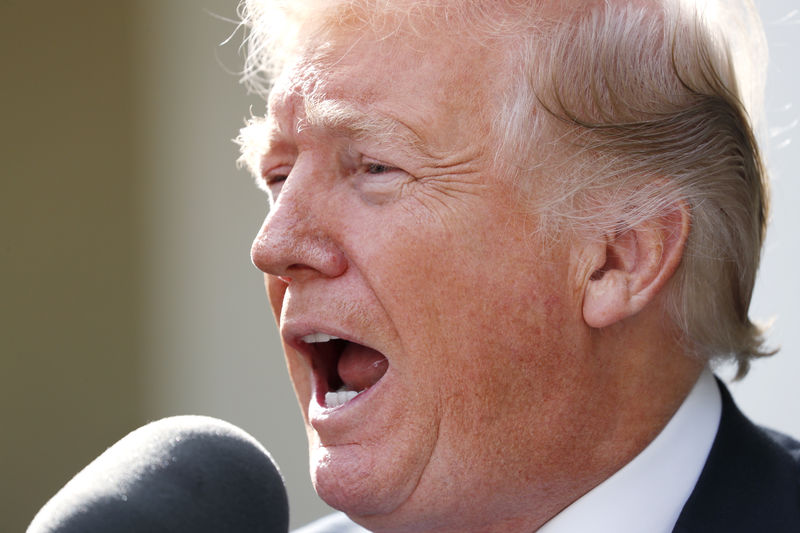Investing.com -- These are the top 5 things you need to know in financial markets on Friday, May 24.
1. May makes way; harder Brexit now likely
British Prime Minister Theresa May confirmed she will stand down on June 7 after three years of trying and failing to deliver Brexit.
The British pound rose over half a cent on the news, but is still below $1.2700, capped by the awareness that the next Conservative Party leader is likely to be from the more aggressive Brexiteer wing of the party. The pound has generally weakened whenever the likelihood of a ‘hard Brexit’ has risen.
2. Trade war becomes currency war
The U.S. issued a veiled warning to China not to devalue its currency as a way of offsetting the damage to its exporters from U.S. tariffs.
The Commerce Department published late Thursday a notice of “proposed rule-making” that would let the administration punish countries that “act to undervalue their currency relative to the dollar, resulting in a subsidy to their exports.”
The CNY/USD has stabilized in the last couple of sessions after sliding to a succession of new lows for 2019 as the trade war has ramped up. It closed at 6.9009 to the dollar on Thursday in mainland trading, while the offshore yuan traded at 6.9184.
3. Markets price in Fed rate cut
All benchmark Treasury bonds out to 10 years in maturity are now trading below the Fed Funds target rate of 2.25%-2.50%. The {{|10-year benchmark}} is yielding 2.33%, having dipped below 2.3% for the first time since October 2017 on Thursday.
By contrast, the three-month T-bill, which is closely tied to the Fed’s official interest rates, is at 2.38%
4. Wall Street Set to Rebound at Open
Stocks are set to rebound from Thursday’s losses at the opening Friday, after President Donald Trump dialled back his rhetoric against Huawei somewhat.
At 5:45 AM ET, the S&P 500 futures contract was up 15 points, the Dow futures contract was up 133 points, while the tech-heavy Nasdaq 100 contract was up 38 points. For all three, that’s a gain of 0.5%, which is a little less than half of what they lost in Thursday’s rout.
Both the International Monetary Fund and the New York Federal Reserve warned Thursday that the spiralling trade war represented a threat to growth and living standards, with the Fed survey indicating that the latest round of tariff hikes would leave the average household $831 a year worse off.
5. Oil's dead-cat bounce
Crude oil prices have also stabilized after their worst day of the year to date.
U.S. crude futures were up 1.2% at $58.69 a barrel, while the international Brent blend was up by the same amount at $68.56.
That’s only a modest recovery from a 6% decline yesterday, which drove prices to their lowest level since mid-March.
The sell-off comes only weeks before OPEC, Russia and others are scheduled to take a decision on whether or not to extend the current agreement on output restraint when its expires at the end of June.
